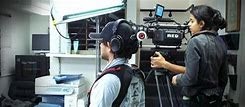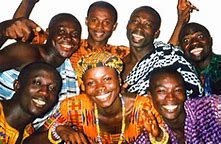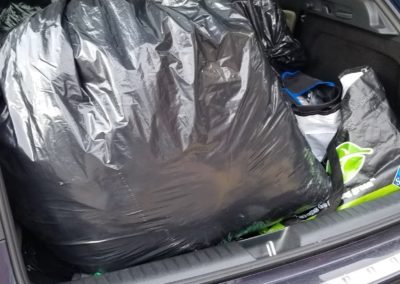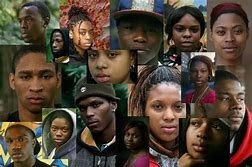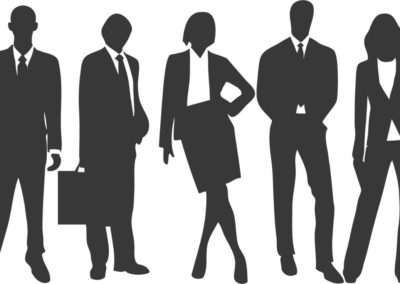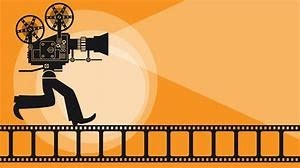STATEMENT OF NEEDS
FOCUS PROBLEM STATEMENTS AMERICA
STEM EDUCATION

STEM EDUCATION
The Atlanta region has a high number of poor people, many Live in very poor neighborhoods. According to 1995 Census data, 12.5 percent of the region’s population were in poverty. Data from 1990 show that over 44 percent of the region’s poor individuals lived in high-poverty neighborhoods and nearly 19 percent of the region’s poor lived in extreme-poverty neighborhoods. High-poverty neighborhoods are those in which 20 percent or more of the residents are poor; extreme-poverty neighborhoods are those in which 40 percent or more of the residents are poor.
40% of Southwest Atlanta Georgia, a predominantly black neighborhood has no jobs. They have been disenfranchised from employment because ⅓ have criminal records. Employers require criminal background checks. Right out the door, these folks are denied jobs. This denial meant no income and the end result is crime, such as armed robbery, burglary, home invasion, gang affiliation and gang fighting. Abudu sees opportunities where many of the businesses have boarded storefronts. Businesses in this neighborhood become fleecing and disappear. Abudu realized…it is time to do something about the problem. Abudu’s Egghead Film Production will provide meaningful film related job training, and employment with partnership with his son’s staffing agency, workforce2100.net. Research shows there is an often, stark divide between northern affluent parts of the Atlanta region and poorer, slow- growing southern areas. The Atlanta region’s growth problem is much more than that of too-rapid suburban growth: it is a problem of unbalanced growth between the northern and southern parts of the region. The majority of new residents, new jobs, and new wealth are on the north side of the Atlanta region—both within the City of Atlanta and its suburbs. At the same time, the most rapidly growing population centers are outer suburban areas up to thirty miles from Atlanta’s central business district. Jobs, people, and prosperity have moved north-wards and outwards, leaving a large arc of little or no population growth, economic decline, and an unusually high concentration of poverty on the south side of the City of Atlanta and its close-in southern suburbs.
IN DEPTH STATEMENT OF NEEDS
What does this mean?
Concentrated poverty has detrimental consequences for individual households and neighborhoods; it can also “push” away businesses and middle-class families, further undermining those neighborhoods and fueling sprawl. Poverty also affects the “geography of opportunity” for those people who remain in inner-city neighborhoods. Neighborhoods of extreme poverty are isolated from economic and educational opportunities elsewhere in the city or region. Poor residents often lack the means—such as information about suburban jobs and reliable and affordable transportation to work—to access those distant opportunities. As a result of this isolation from opportunity, people who live in very poor neighbor- hoods are more likely than residents of moderately poor or non-poor neighborhoods to drop out of school, become a single or teenage parent, and receive welfare payments. Living in a very poor neighborhood exacerbates the difficulties of being poor.
Being home to large numbers of poor people also places serious financial burdens on entire jurisdictions that serve as a huge disincentive for middle-class taxpayers and firms to locate or remain there.
A series of studies from the Wharton School at the University of Pennsylvania has shown that, despite receiving federal anti-poverty aid, cities with high levels of poverty have to spend more of their own revenues on direct poverty expenditures (e.g., welfare, public health, and hospitals) than do jurisdictions with low poverty. Poverty also drives up the cost of providing other services like police, schools, courts, and fire protection. As two Wharton scholars concluded, “This reduces the resources cities have to serve non-poor residents and increases the tax rates they have to charge all their residents.”12 That means that all the residents and businesses in the City of Atlanta and in the near southern suburbs that have high concentrations of poverty are paying for poverty’s costs, at the expense of better services and infrastructure.
Though black Americans represent only 13.4% of the population; more than 30 million out of 40 million of black population represent a diverse array of backgrounds that is considered poor, needy and underprivileged. Overwhelming majority has no employment and/or underemployed. AAAIMS.ORG intends to recruit many young adults from this group of individuals, and use film, music and STEM education to improve their lives.
Prevalence
According to the US HHS Office of Minority Health [3]:
Adult Black/African Americans are 20 percent more likely to report serious psychological distress than adult whites.
Black/African Americans living below poverty are three times more likely to report serious psychological distress than those living above poverty.
Adult Black/African Americans are more likely to have feelings of sadness, hopelessness, and worthlessness than are adult whites.
And while Black/African Americans are less likely than white people to die from suicide as teenagers, Black/African Americans teenagers are more likely to attempt suicide than are white teenagers (8.3 percent v. 6.2 percent).
Black/African Americans of all ages are more likely to be victims of serious violent crime than are non-Hispanic whites, making them more likely to meet the diagnostic criteria for post-traumatic stress disorder (PTSD). Black/African Americans are also twice as likely as non-Hispanic whites to be diagnosed with schizophrenia. [4]
Attitudes
According to a study conducted by Ward, Wiltshire, Detry, and Brown in 2013 [5]:
Black/African Americans hold beliefs related to stigma, psychological openness, and help-seeking, which in turn affects their coping behaviors. Generally speaking, the participants in this study were not very open to acknowledging psychological problems, but they were somewhat open to seek mental health services.
Thirty percent of participants reported having a mental illness or receiving treatment for a mental illness.
Black/African American men are particularly concerned about stigma.
Cohort effects, exposure to mental illness, and increased knowledge of mental illness are factors which could potentially change beliefs about symptoms of mental illness.
Participants appeared apprehensive about seeking professional help for mental health issues, which is consistent with previous research. However, participants were willing to seek out some form of help.
Treatment Issues
Black/African Americans today are over-represented in our jails and prisons. People of color account for 60 percent of the prison population. Black/African Americans also account for 37 percent of drug arrests, but only14 percent of regular drug users (illicit drug use is frequently associated with self-medication among people with mental illnesses). [6]
Because less than 2 percent of American Psychological Association members are Black/African American, some may worry that mental health care practitioners are not culturally competent enough to treat their specific issues. [7] This is compounded by the fact that some Black/African American patients have reported experiencing racism and micro-aggression from therapists. [8]
Stigma and judgment prevents Black/African Americans from seeking treatment for their mental illnesses. Research indicates that Black/African Americans believe that mild depression or anxiety would be considered “crazy” in their social circles. Furthermore, many believe that discussions about mental illness would not be appropriate even among family. [9]
Access/Insurance
Disparities in access to care and treatment for mental illnesses have also persisted over time.
While implementation of the Affordable Care Act has helped to close the gap in uninsured individuals, 15.9 percent of Black/African Americans, versus 11.1 percent of whites Americans were still uninsured in 2014. [10]
In 2012, the percentage of people who were unable to get or delayed in getting needed medical care, or prescription medicines was significantly higher for people with no health insurance (18.7%) than for people with private insurance (8.4%). [10]
In 2011, 54.3 percent of adult Black/African Americans with a major depressive episode received treatment, compared with 73.1 percent of adult white Americans. [11]
Compared to 45.3 percent of white Americans, 40.6 percent of Black/African Americans age 12 and over were treated for substance abuse and completed their treatment course in 2010.
AAAIMS. ORG intends to enroll 10-20 young adults, ages between 18 and 25, to learn film production. These individuals will then get opportunities to be placed into film production work.
Abudu realizes to be successful, he needs individual donations, government funding, as well as corporate funding.
AFRICA
FILM, MUSIC AND STEM EDUCATION
Africa is a third world continent known for low education, disease, corrupt politicians and grand poverty. AAAIMS.ORG is investing in Nigeria by building a film and music school to improve the learning experiences of young adults through partnerships with donors in the United States.
AAAIMS.ORG intends to build a film school and Bed and Breakfast in an abandoned acres of land deeded to our CEO by his parents.
AAAIMS.ORG intends to build student housing and film and music studios on the acquired land.
AAAIMS.ORG students will be able to collaborate on producing B movies acceptable by giant streaming services such as Netflix. The money garnered will be used to train more students.
Youth Unemployment Rate in Nigeria averaged 23.63 percent from 2014 until 2018, reaching an all time high of 38 percent in the second quarter of 2018 and a record low of 11.70 percent in the fourth quarter of 2014.
Nigeria Youth Unemployment Rate | 2014-2018 Data | 2019
AAAIMS.ORG intends to enroll 100-200 students. These students will be housed in a dormitory setting and taught film production with emphasis on STEM education.
AAAIMS.ORG already secured a building. Our EXECUTIVE DIRETOR’s parents left him a building. The site is in disrepair and needs demolition. AAAIMS.ORG intends to build two buildings in memory of Amishetu, our EXECUTIVE DIRECTOR mother who died as a result of Diabetes complications.
SUSTAINABLE SOLUTIONS
PARTNERSHIP WITH WORKFORCE 2100
AAAIMS.ORG has partnered with Workforce2100.net to provide staffing needs to many unemployed African Americans. The company understands our issues such as 1 in 3 of us have felony record. Workforce2100.net is able to recruit these folks and place them in meaningful jobs.
JOB READINESS
AAAIMS.ORG partnership with Workforce2100.net will be providing much needed Job it Readiness. Our focus group or students will undergo JOB READINESS programs under the leadership of our CEO who is decorated educationally. Students will be taught how to write resumes, do interviews and prepare for the job environment.
GIVING
AAAIMS.ORG is committed to good causes geared to helping the poor, needy and underprivileged population.
This is AAAIMS.ORG EXECUTIVE DIRECTOR donating goods to Goodwill of Powder Springs GA
CLOTHING PROVISIONS
AAAIMS.ORG intends to provide professional clothing or attire to poor, needy and underprivileged students and young adults who are looking to enter American job market.
PLACEMENT
AAAIM.ORG partnership with Workforce2100.net will be able to place its students into meaning film and other high paying jobs.

Get in Touch. Get Involved.
African American and African Improvement Movement Society (AAAIMS) is a nonprofit that engages in research, and uses film production to improve the lives of African Americans and Africans.



